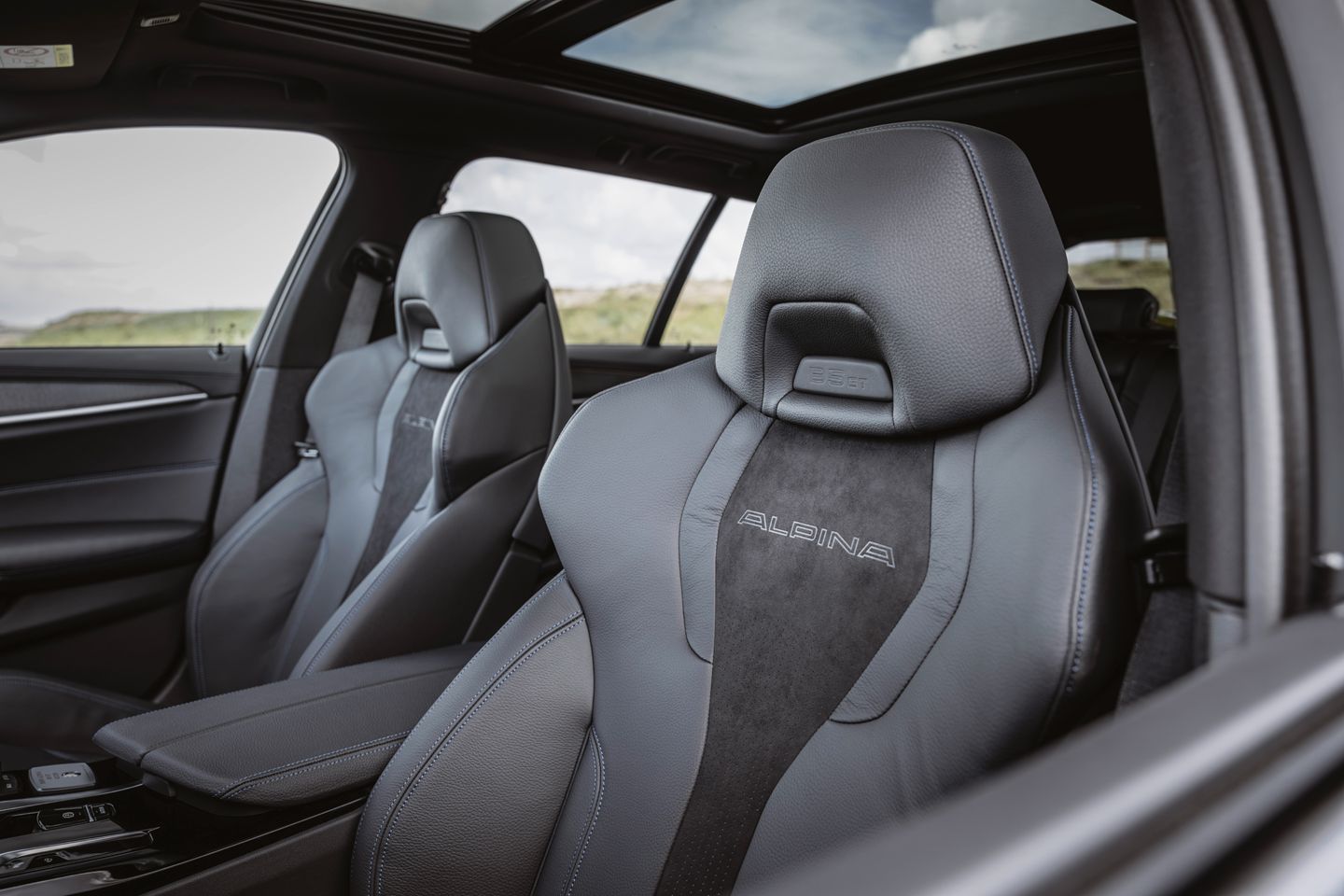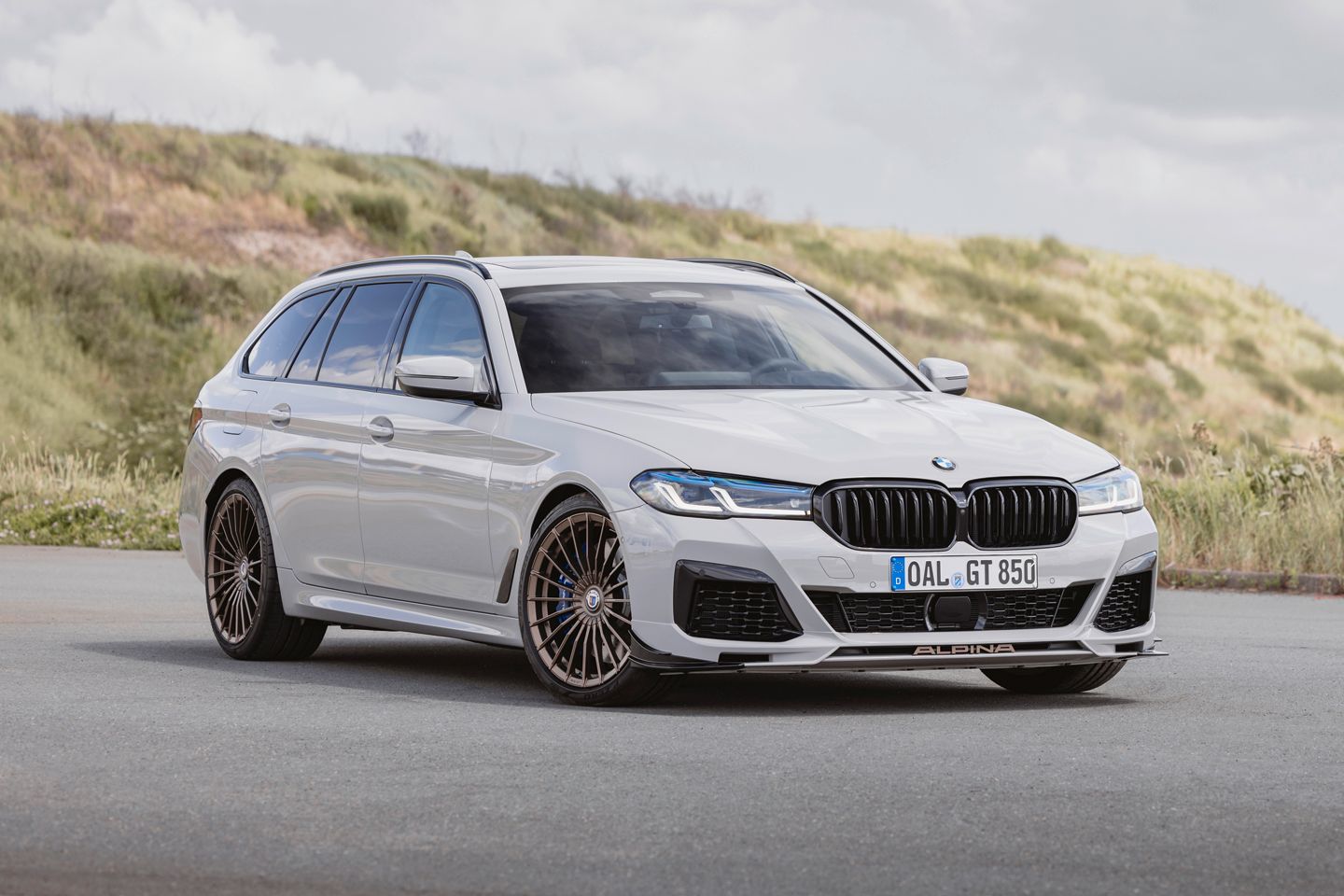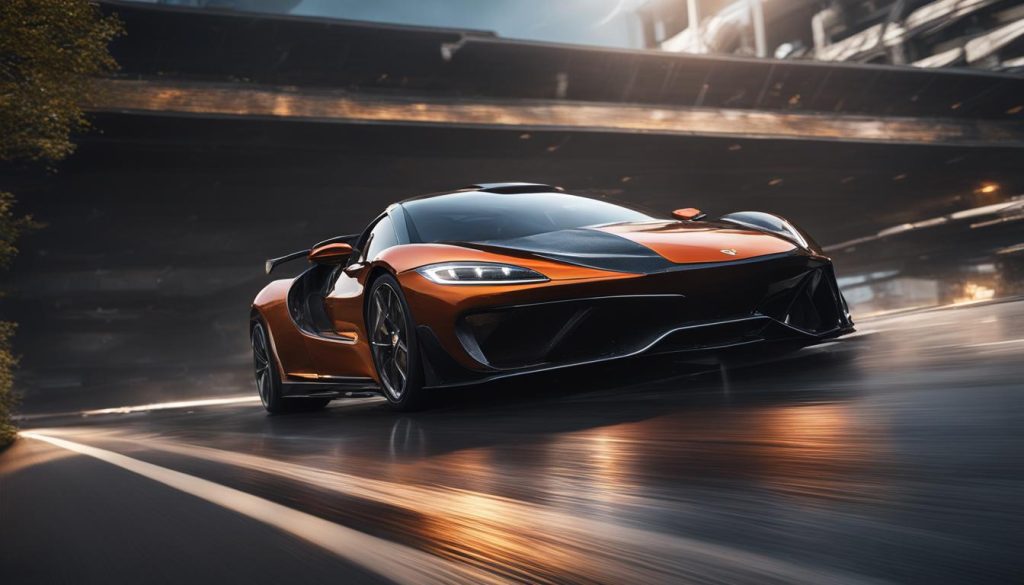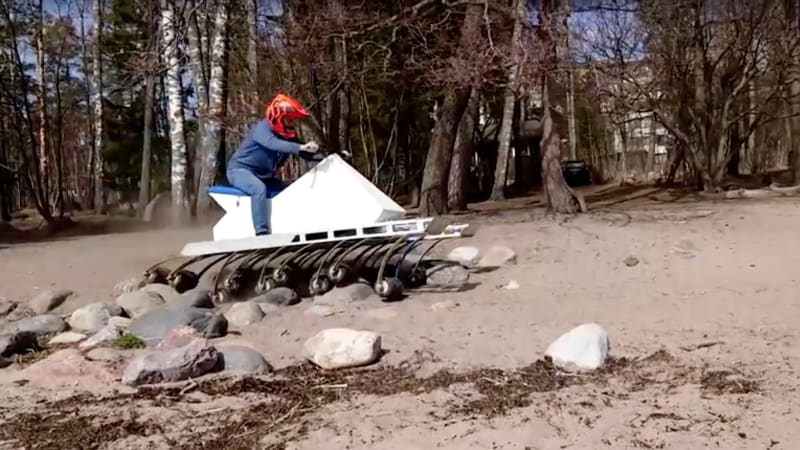
Is anyone else getting the feeling that we’re approaching the End of Days? We know that performance vehicles will continue into the pure electric age that is fast approaching, and that in terms of raw speed some will be much quicker than any running on petrol or diesel. But we also know that many of the cars that we have collectively loved are soon going to be extinct. Cars like this – the final ever Alpina 5 Series variant, the new B5 GT.
The clock is fast running down for Alpina as an independent maker of new cars. The brand will be fully absorbed by BMW at the end of 2025, when it will presumably get used as part of the larger company’s EV future. Alpina will continue from that point onwards as Alpina Classic, dealing with the cars it has already built.
The B5 GT isn’t the final new Alpina, we can safely presume there will be at least one more valedictory special before the final merger. But it will be the last one based on a 5 Series, the last of a line that stretches all the way back to the launch of the E12 generation B7 S Turbo back in 1981. So this is the final countdown. We’re leaving together, but still it’s farewell.


Every one of the Alpina-ized 5 Series models since the first B7 has followed the same recipe – big performance with minimal drama. The existence of BMW’s own M division means that Alpina models offer a gentler take on the ability to deliver and sustain huge speeds. That’s one of the reasons Alpina pioneered the use of using steering wheel buttons for manual gear selection with an automatic gearbox, getting ‘Switch-Tronic’ to market two years before Porsche branded a similar idea Tiptronic. It’s also why so many Alpina products are used in the manner the brand intended – for high-speed cruising on derestricted Autobahns.
Because while BMW has speed limiters, albeit now sometimes set at higher levels than the traditional 155mph, Alpinas are derestricted. The original B7 S Turbo could hit 161mph, a huge number for even the most potent sportscars in the early ‘80s. By 1989 the seminal E34-based B10 Bi-Turbo had lifted the top speed to 180mph – leading one American magazine to hail it as being both faster and better to drive than a Ferrari Testarossa. Many Alpinas are bought for just this sort of duty cycle, and tend to be worked hard. CEO Andreas Bovensiepen is proud that the company’s cars are used, not just collected. He says that in Germany 30,000km a year is a typical annual mileage and many are doing more than 50,000; the company knows of several cars that are still in daily use with odometers north of 500,000km.
As the end of a long line, the B5 GT’s core virtues are very similar to those of its predecessors, and indeed the regular B5 that it is based on. It is a run-out special, limited to 250 cars, but with only limited changes having been made. It’s not as if any radical revisions were required.


The headline is a modest performance bump, but one sufficient to make the B5 GT the most powerful model in Alpina’s history. The 4.4-litre N63 twin-turbo V8 now produces peaks of 625hp and 627lb ft, with the latter figure available from just 3,500rpm. Those numbers represent increases of 26hp and 49lb ft over the regular B5 and come from a revised intake system and a punchier ECU. There is also a redesigned exhaust to give some fruitier high-load harmonics to indicate its specialness, plus titanium black finish for the tailpipe tips.
Other hardware changes are limited. Alpina says the GT gets a new front bulkhead reinforcement to improve steering precision and has new brake pads, although the vast discs remain unchanged. Spring and damper rates are similarly unaltered, also the settings for the active anti-roll system and the standard rear steering. The only big suspension tweak is the arrival of stiffer bumpstops, but these will only alter behaviour under the hardest use. The GT continues to ride on bespoke Alpina-specific P-Zero tyres, with a new optional bronze-gold finish for the traditional 20-spoke, 20-inch alloy wheels. The other way to distinguish it from a non-GT B5 is the arrival of small dive plane wings on the front bumper.
Considering the pride that Alpina takes in the B5 GT’s top speed – 205mph officially for the saloon and 204mph for the wagon, although engineers say that these are ‘worst case’ scenarios – the launch venue is a definite restriction. Alpina likes to introduce us to new cars at racetracks and the GT makes its debut at the Zandvoort circuit near Amsterdam. A spectacular place and a great track, even in its cut-down modern 2.6-mile long configuration, but definitely not a testing analogue for the sort of derestricted Autobahn that will be the GT’s natural habitat. High speeds are possible here, but only briefly.


The B5 GT’s performance is both monstrous and relentless. We have reached a stage where 0-60 times have become essentially meaningless for sharp-end stuff. Alpina claims a 0-62mph time of 3.2 seconds for the GT saloon, and 3.4 seconds for the Touring. A better indication of the forces at play is the four door’s claimed ability to get from rest to 124mph in 10.9 seconds. Something that feels entirely after the first flying run along Zandvoort’s main straight.
It also feels very different to a revvier, angrier M car. The Alpina is pure muscle, the torque giving huge urge pretty much across the board and making it very tolerant of being short-shifted. Even in Zandvoort’s tightest corners, there seemed little point selecting second gear given the punch in third, and leaving the autobox to its own devices in Sport mode brought minimal time penalty over actually selecting gears. Yes, it is possible to engender some turbo lag by deliberately selecting a very high gear and then flooring the throttle. But overall the flexibility of this engine feels remarkable.
I didn’t have an M5 for back-to-back testing, but even flying solo the B5 GT’s chassis and responses felt much more laid back on track than my memories of the M car. I started out in the GT saloon before moving to the Touring. It’s the most athletic version of the car, but there is still a definite softness to the initial responses, even with the dynamic mode turned all the way up to Sport Plus.


This isn’t a criticism: the B5 is a great car to push hard, with copious feedback and huge grip. It doesn’t have the full battery of understeer-fighting systems of an M5, with a conventional limited-slip differential at the back rather than an active one. But it still turns willingly, delivers crisp connection through the steering and hooks up amazingly well when being pushed. Storms the day before my drive had cleared Zandvoort of almost all of the blown sand which often makes the track surface slippery, but I was still constantly amazed by how much traction it could find. When the B5 does let go – which only happens under a fair amount of provocation – it does so gently and progressively.
While the GT saloon is faster, switching to the Touring quickly proves it is the one that I’d actually pick given the chance. Even being fanged around a track the perceived differences are minimal. The estate is 100kg heavier on Alpina’s numbers but from the driver’s seat the most obvious distinctions are the view in the rearview mirror and slightly more noise coming from the rear of the car. It goes, grips and slips very nearly as well as the saloon – but comes with the unarguable extra appeal of both a bigger loadspace and, for my money, better looks.
Alpina’s customers seem to be in agreement. While the overall run is limited, buyers had free choice of which bodyshell to go for with Alpina then adjusting the proportions according to demand. The final score is apparently set to be 180 Tourings and just 70 saloons. And a full 80 per cent of the allocation will be going to either Germany or Japan. (BMW’s confirmation of the forthcoming M5 Touring came just days before the drive event.)


At Zandvoort, I also spoke to Andreas Bovensiepen about the reasons behind the decision to sell the Alpina brand to BMW. That interview will run next week, along with drives in some of the company’s greatest hits. But, without dropping spoilers, the logic is that the world is changing and it really isn’t going to be possible to extract more performance from combustion-powered cars for much longer. So while the name will go to BMW, Alpina Classic’s future will lie in the company’s past.
The B5 GT is a fine farewell to the company’s most famous model range. It’s always better to go out on a high.
Specification | Alpina B5 GT
Engine: 4395cc V8, twin turbo
Gearbox: Eight-speed auto, all-wheel drive
Power: 625hp @ 5500rpm
Torque: 627 lb-ft @ 3500rpm
0-62mph: 3.2-sec (saloon), 3.4-sec (Touring)
Top speed: 205mph (saloon) 204mph (Touring)
Kerbweight: 2055kg (saloon), 2155kg (Touring) (EU DIN)
MPG: 24.4 (saloon), 23.5 (Touring) (WLTP combined)
CO2: 263g/km (saloon), 272g/km (Touring)
Price: €145,500 (saloon), €148,500 (Touring); Germany including VAT. All sold.
#Alpina #Review













